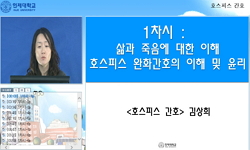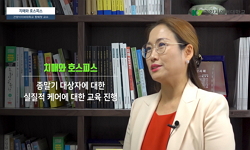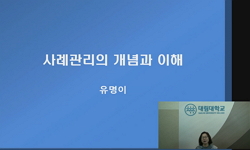우리나라의 암 사망률은 1980년대 후반부터 전체 사망률 중 제 1위를 차지하게 되었고, 해마다 증가함에 따라 사회문제화 되고 있어서 말기 암 환자의 관리와 삶의 질에 대한 관심이 점차 높...
http://chineseinput.net/에서 pinyin(병음)방식으로 중국어를 변환할 수 있습니다.
변환된 중국어를 복사하여 사용하시면 됩니다.
- 中文 을 입력하시려면 zhongwen을 입력하시고 space를누르시면됩니다.
- 北京 을 입력하시려면 beijing을 입력하시고 space를 누르시면 됩니다.
말기 암 환자의 삶의 질 변화과정에 관한 연구 : 근거이론 접근방법으로 = (A) Study on the Changing Process of Quality of Life of Terminal Cancer Patients : based on the Grounded Theory Approach
한글로보기https://www.riss.kr/link?id=T9129196
- 저자
-
발행사항
서울 : 가톨릭대학교 사회복지대학원, 2003
-
학위논문사항
학위논문(석사) -- 가톨릭대학교 사회복지대학원 , 의료사회복지학과 , 2003. 8
-
발행연도
2003
-
작성언어
한국어
- 주제어
-
KDC
338.31 판사항(4)
-
DDC
362.1 판사항(19)
-
발행국(도시)
서울
-
형태사항
iii, 162p. : 삽도 ; 26cm
-
일반주기명
참고문헌: p. 154-159
- 소장기관
-
0
상세조회 -
0
다운로드
부가정보
국문 초록 (Abstract)
우리나라의 암 사망률은 1980년대 후반부터 전체 사망률 중 제 1위를 차지하게 되었고, 해마다 증가함에 따라 사회문제화 되고 있어서 말기 암 환자의 관리와 삶의 질에 대한 관심이 점차 높아지고 있는 추세에 있다. 말기 암 환자의 삶의 질은 간단히 신체적인 면 하나만으로 논할 수 없으며 심리적, 경제적, 사회적, 영적인 측면을 모두 고려해야 한다. 이에 대해 지금까지의 연구들은 신체적, 심리적, 사회적 고통에 대한 삶의 질을 언급하고는 있으나, 의료사회복지 관점에서 말기 암 환자의 삶의 질에 대해 실재적 경험을 중심으로 한 체계적인 연구는 부족한 실정이다.
따라서 본 연구의 목적은 말기 암 환자가 경험하는 삶의 질을 이해하고, 말기 암 때문에 파생되는 주요문제와 그에 따른 반응 또는 행동패턴을 설명하는 개념을 추출하며, 실체이론(Substantive Theory)을 개발하여, 의료사회복지사가 현장에서 호스피스 서비스를 효과적으로 제공할 수 있는 방안을 모색하는 것이다.
연구의 목적을 이루기 위하여 본 연구는 Strauss & Corbin(1998)이 제시한 근거이론 방법을 적용하였다. 이 연구방법은 말기 암 환자가 실제로 경험하는 삶의 질에 대한 깊이 있는 이해와 실재(real existences)를 기반으로 하여 귀납적으로 개념과 이론을 추출하고자하는 본 연구에 적합하였다.
연구참여자들은 말기 암 진단을 받은 성인환자들인 여자 6명, 남자 5명으로 총 11명이었고, 참여자 모두 자신이 말기라는 사실을 알고 있는 환자였다.
자료수집은 심층면담과 참여관찰을 통해 이루어졌으며, 이론적 포화에 이를 때까지 진행되었다. 자료분석은 자료수집과 동시에 하면서 지속적인 비교분석을 하였다. 개방 코딩에서는 개념 명명 및 범주화, 축 코딩에서는 패러다임에 따른 범주분석과 과정분석을 하였다. 선택 코딩에서는 핵심범주를 발견하고 이야기 윤곽을 적었으며, 핵심범주를 중심으로 범주의 관련성을 도출한 후 유형을 분류하였다. 또한 상황모형을 통해 연구와 관련된 광범위한 상황을 고려해 보고 자료를 통한 연구의 전 과정과 결과를 통합 분석하였다.
본 연구에서 코딩과정을 통해 도출된 개념 및 이론에 대한 결과는 다음과 같다.
1. 개방코딩
85개의 개념과 33개의 하위범주, 13개의 범주가 도출되었다.
2. 축코딩
1) 패러다임에 의한 범주분석
말기 암 환자의 삶의 질 경험의 인과적 조건은 ‘말기 암 판정 받음’이었고, 중심현상은 ‘저하된 삶의 질’이었으며, 이 현상에 영향을 미치는 맥락적 조건은 ‘부정적 병 인식’과 ‘병의 진행’이었다. 이러한 현상에 대해 작용/상호작용 전략을 촉진시키거나 억제하는 방향으로 영향을 주는 중재적 조건은 ‘지지체계’, ‘호스피스 완화의료’, ‘종교성’이었다. 작용/상호작용 전략은 ‘현실회피’, ‘현상유지’, ‘현실인정’이었으며, 결과는 ‘죽음에 대한 거부’, ‘죽음에 대한 소극적 수용’, ‘죽음에 대한 순응’으로 나타났다.
2) 과정분석
말기 암환자는 ‘저하된 삶의 질’이라는 현상에 대해 ‘재정의 단계’, ‘억제 단계’, ‘정면대결 단계’의 과정을 경험하는 것으로 나타났으며, 이 과정을 통해 ‘현실회피’, ‘현상유지’, ‘현실인정’이라는 작용/상호작용에 따른 행동변화를 보이는 것으로 나타났다.
① 재정의 단계
재정의 단계는 참여자들이 말기 암 판정을 받은 후 현상에 대하여 상호작용하면서 경험하는 첫 번째 단계로 나타났다.
참여자들은 말기 암으로 인한 총체적 고통에서 벗어나기 위해 자신이 처해있는 상황에 대해 ‘재정의 단계’의 과정을 경험한다. 이 단계에서는 살아야 하는 이유를 찾고, 치료의 가능성과 병 극복의 가능성을 믿고 싶어하며, 다른 치료방법 등을 찾으면서 때로는 생명단축을 시켜달라는 등 수동·공격적인 행동도 나타난다. 따라서 ‘재정의 단계’의 과정을 통한 작용/상호작용 전략은 ‘현실회피’로 나타났다.
② 억제 단계
‘재정의 단계’를 거친 참여자들은 병의 진행으로 인하여 다가오는 죽음을 막아보기 위해 모든 자극을 피하고 감정을 억누르는 ‘억제 단계’의 과정을 경험하는 것으로 나타났다. 이 단계에서는 죽음에 대한 생각을 가능한 한 피하고 신체적, 정서적 자극을 감소시키며, 걱정을 분담하기를 원하면서 현재의 상태를 유지해보고자 한다. 따라서 ‘억제단계’의 과정을 통한 작용/상호작용 전략은 ‘현상유지’로 나타났다.
③ 정면대결 단계
‘재정의 단계’와 ‘억제 단계’를 거친 참여자들은 어찌할 수 없이 맞서야만 하는 죽음이라는 현실에 대해 ‘정면대결 단계’의 과정을 경험하는 것으로 나타났다. 이 ‘정면대결 단계’에서는 현실을 정확히 파악하고 직시하려고 하며, ‘저하된 삶의 질’ 현상에 대해 정면으로 대응하면서 죽음을 예기(anticipation)한다. 따라서 ‘정면대결 단계’의 과정을 통한 작용/상호작용 전략은 ‘현실인정’으로 나타났다.
3. 선택코딩
선택코딩에서의 핵심범주는 ‘죽음에 대한 수용태도에 따른 여명(餘命)기간의 삶의 질 변화’로 나타났으며, 핵심범주를 중심으로 유형을 분석한 결과 즉음에 대한 ‘거부형’, ‘소극적 수용형’, ‘순응형’이라는 3유형으로 나타났다.
1) 죽음에 대한 ‘거부형’은 말기 암 판정에 대해 강하게 부정하면서 힘들게 투병하며 여명기간을 보내는 것으로 나타났다.
이 유형은 ‘부정적 병 인식’이 강하고 ‘병의 진행’이 빠르며, ‘지지체계’가 좁고, ‘호스피스·완화의료’에도 부정적인 성향을 보였다. 또한 ‘종교성’은 약하며, ‘현실회피’는 지속적으로 강하게 하고, ‘현상유지’는 일시적으로 하면서도 적극적으로 하고, ‘현실인정’은 끝까지 하지 않았다.
‘거부형’은 여명(餘命)기간 동안 절망감이 심화되고, 죽음에 대한 두려움이 증대됨으로써 여명기간의 삶의 질은 더욱 저하되는 것으로 나타났다.
2) 죽음에 대한 ‘소극적 수용형’은 ‘말기 암 판정’에 대해 긍정은 하였으나 ‘현실회피’를 일시적으로 약하게 하고, ‘현상유지’는 지속적이고 적극적으로 하면서 '현실인정'은 소극적으로 하는 것으로 나타났다. 이 유형은 '부정적 병 인식', '병의 진행 속도', '지지체계', ‘호스피스·완화의료’, ‘종교성’에는 영향을 받지 않았다. ‘소극적 수용형’은 끝까지 삶에 대한 미련이 강하여 여명기간동안 불안하고 우울한 나날을 지냈으며, 여명기간의 삶의 질이 더욱 저하되는 것으로 나타났다.
3) 죽음에 대한 ‘순응형’은 ‘말기 암 판정’에 대해 긍정을 하고, ‘부정적 병 인식’, ‘병 진행 속도’, ‘종교성’에는 영향을 받지 않았다. 그러나 ‘지지체계’는 넓고, ‘호스피스·완화의료’에는 긍정적이었다. 또한 ‘현실회피’는 일시적이면서 약하게 하였고, ‘현상유지’는 일시적이면서 소극적으로 하였으며, ‘현실인정’은 적극적으로 하였다.
순응형은 여명기간 동안 삶의 정리와 사별준비를 하면서 비교적 안정되고 평안한 마음으로 지냈다. 따라서 여명기간의 삶의 질은 향상되는 것으로 나타났다.
또한 위의 세 유형을 근거자료와 비교하여, 일치되는 관계진술을 확인한 결과, 결국 거기에서 3개의 가설이 도출되었다. 3개의 가설은 다음과 같다.
1) 「지지체계가 넓고, 호스피스·완화의료에 긍정적인 경우의 '죽음에 대한 수용태도에 따른 여명기간의 삶의 질 변화'는 ‘현실회피’, ‘현상유지’, ‘현실인정’의 상호작용을 통해, 죽음에 대한 순응으로 여명기간의 삶의 질이 향상된다.」
2) 「부정적 병 인식이 강하고, 지지체계가 넓고, 호스피스 완화의료에는 부정적인 경우이거나, 부정적 병 인식이 약하고, 병의 진행이 느리고, 지지체계가 좁고, 호스피스·완화의료에는 긍정적인 경우의 '죽음에 대한 수용태도에 따른 여명기간의 삶의 질 변화'는 ‘현실회피’, ‘현상유지’, ‘현실인정’의 상호작용을 통해, 죽음에 대한 소극적 수용으로 여명기간이 삶의 질이 더욱 저하된다.」
3) 「부정적 병 인식이 강하고, 병의 진행이 빠르고, 지지체계가 좁고, 호스피스·완화의료에 부정적이고, 종교성이 약한 경우의 '죽음에 대한 수용태도에 따른 여명기간의 삶의 질 변화'는 ‘현실회피’, ‘현상유지’의 상호작용을 통해, 죽음에 대한 거부로 여명기간의 삶의 질이 더욱 저하된다.」
본 연구에서는 이상의 결과와 같이 말기 암 환자가 ‘죽음에 대한 수용태도에 따른 여명(餘命)기간의 삶의 질 변화’의 과정을 경험하는 것으로 나타났다. 즉, 말기 암 환자가 경험하는 삶의 질 변화과정은 죽음에 대한 수용태도에 따라 여명기간의 삶의 질이 더욱 저하되거나 향상되는 과정이라고 할 수 있다.
다국어 초록 (Multilingual Abstract)
In South Korea, they tend to be more interested in the management of terminal cancer patients as well as their quality of life, because the mortality from cancers recorded the highest of total mortalities since the latter half of the 1980's to increas...
In South Korea, they tend to be more interested in the management of terminal cancer patients as well as their quality of life, because the mortality from cancers recorded the highest of total mortalities since the latter half of the 1980's to increase year by year and create so many social problems. The quality of life of terminal cancer patients needs to consider not only physical aspects but also psychological, economic, social and spiritual aspects, etc. The studies on terminal cancer patients were concentrated on the quality of life concerning their physical, psychological and social pains so far, but were not made systematically based on real experience on the quality of life of the patients from the point of view of medical social welfare.
Therefore, the purpose of this study is to comprehended the quality of life that terminal cancer patients experience; to extract concepts that explain patterns of reaction or action aroused by problems related with terminal cancer; and to develope substantive theory. Thus, the ultimate aim of this research is to arm a medical social worker with an effective way to provide hospice service to terminal cancer patients in the field.
The study adopted grounded theory method (Strauss & Corbin, 1998), which was suitable to the study extracting concepts and theories inductively that were based on deep understanding and real existence of the quality of life experienced by the patients.
The objects of the study were eleven adult patients, i.e., six of women patients and five of men patients, who were already given terminal cancer diagnosis.
Data were collected with in-depth interview and participant observation until they were saturated. Data collection and analysis were conducted simultaneously and data were compared continuously. The open coding consisted of concept naming and category-making, while the axial coding did category analysis as well as process analysis depending upon paradigm. The selective coding consisted of the discovery of core category as well as story outline to classify types after finding category relationship based on core category. Also, I used conditional matrix to consider extensive circumstances related with this research and analysed the data to obtain the result of this research.
The findings of the concepts and theories in the coding process are as follows:
1. The Open Coding
13 categories and 33 sub-categories, 85 concepts were generated.
2. The Axial Coding
1) The Category Analysis by Paradigm
The terminal cancer patients experienced the quality of life as follows: The casual condition was ‘being given terminal cancer judgment’, and the central phenomenon was ‘deteriorated quality of life’, and the contextual condition having influence upon the central phenomenon was ‘the negative cognition of the disease’ as well as ‘the progress of the disease’. The intervening condition was ‘the support system’, ‘the hospice·palliative medicine’ and ‘the religious soul’. The action and interaction strategies were ‘the escape from reality’, ‘the maintenance of the status quo’, and ‘the admission of the realities’ and the outcome of the strategies was found to be in order of ‘rejection to death’, ‘passive reception of death’ and ‘adaptation to death’.
2) Analysis of process
The terminal cancer patients were found to experience three stages, that is, the redefinition stage, the repression stage and the confrontation stage, etc, and to show behavioral changes in accordance with the action and interaction of ‘the escape from reality’, ‘the maintenance of the status quo’, and ‘the admission of the realities’.
① The Redefinition Stage
The redefinition stage was the first stage that the terminal cancer patients, i.e., the objects of the study, experienced during the interaction of present situation after being given the judgement of terminal cancer.
The patients experienced ‘the redefinition stage’ on their situation to be free from overall pains caused by the cancer disease. They looked for the reasons why to live, and wanted to rely upon the possibilities of disease treatment and overcoming, and looked for other therapies, and sometimes asked for shortened life: In such a way, they showed passive and aggressive behaviour depending upon situation. Therefore, the action and interaction strategies in ‘the redefinition stage’ were found to be ‘the escape from reality’.
② The Repression Stage
After ‘the redefinition stage’, the patients experienced ‘the repression stage’ that escapes from stimulus and suppresses feeling to avoid approaching death in the development process of the cancer disease. They made efforts to avoid the ideas on death and reduce physical and emotional stimulus and wanted to share anxiety and maintain a status quo. In this stage, the action and interaction strategies were found to be ‘the maintenance of the status quo’.
③ The Confrontation Stage
After ‘the redefinition stage’ and ‘the repression stage’, the terminal cancer patients were found to experience ‘the confrontation stage’ at the realities of death which they were forced to face. In this stage, the patients attempted to understand and look the reality in the face correctly, and anticipated death. Therefore, the action and interaction strategies in this stage were found to be ‘the admission of the realities’.
3. The Selective Coding
The core category of the selective coding was found to be ‘the changes of quality of life during the remainder of their lives in accordance with the acceptance attitude on death’: The analysis of types focused on core category showed three types: ‘the rejection type’, ‘the passive acceptance type’ and ‘the adaptation type’.
1) ‘The rejection type’ of the patients strongly denied terminal cancer judgment and lived the remainder of their lives at their struggle against the cancer disease.
This type of patients had strong ‘negative disease cognition’, quick ‘progress of the disease’, narrow ‘support system’ and negative attitudes against even ‘the hospice·palliative medicine’. In addition, they had weak ‘religious soul’, continuously strong ‘escape from reality’ and temporary and ‘positive maintenance of the status quo’, and did not admit of the admission of the realities to the end.
‘The rejection type’ worsened hopelessness during the remainder of life, and increased death fear to deteriorate the quality of life during the same period.
2) ‘The passive acceptance type’ of the patients showed affirmative attitudes on ‘the terminal cancer judgment’, temporary and weak ‘escape from reality’, continuous and positive ‘maintenance of the status quo’ and passive ‘admission of the realities’. This type of patients were not influenced by ‘the negative disease cognition’, ‘the progress of the disease’, ‘the support system’, ‘the hospice·palliative medicine’ and ‘the religious soul’. ‘The passive acceptance type’ of the patients lived uneasy and depressed life during the remainder of life, and their quality of life was worsened during the same period.
3) ‘The adaptation type’ of the patients showed affirmative attitudes on ‘terminal cancer judgment’ and were not influenced by ‘the negative disease cognition’, ‘the progress of the disease’, and ‘the religious soul’. 'The adaptation type' of the patients, however, had wide ‘support system’, and showed affirmative attitudes on ‘the hospice·palliative medicine’. In addition, this type of patients showed temporary and weak ‘escape from reality’, temporary and passive ‘maintenance of the status quo’, and positive ‘admission of the realities’.
The adaptation type of patients lived life with rather stable and quiet mind while preparing for death during the remainder of their life. Therefore, their quality of life was improved during the same period.
Also, I compared three types above with grounded data and confirmed the statements of relationship. As a result, three hypotheses were deduced as follows:
1. In case patients have the wide support system and positive attitudes toward hospice & palliative medicine, patient's quality of life during the remainder of their lives is improved through interaction between 'escape from reality', 'maintenance of the status quo' and 'admission of the realities' as patients undergo adaptation to death.
2. In case patients have the negative disease cognition, wide support system and negative attitudes toward hospice & palliative medicine, patient's quality of life during the remainder of their lives is deteriorated through interaction between ‘escape from reality’, ‘maintenance of the status quo’ and ‘admission of the realities’ as patients undergo passive acceptance to death. Also, patients who have weak negative disease cognition, slow progress of the disease, narrow support system and positive attitudes toward hospice & palliative medicine experience same results.
3. In case patients have strong negative disease cognition, rapid progress of the disease, narrow support system, negative attitudes toward hospice & palliative medicine and weak religious soul, patient's quality of life during the remainder of their lives is deteriorated through interaction between ‘escape from reality’, ‘maintenance of the status quo’ as patients undergo denial of death.
In this paper, the terminal cancer patients were found to experience the process of ‘the changes of quality of life during the remainder of their lives in accordance with the acceptance attitude on death’: The changes of quality of life experienced by the patients is to deteriorate or improve the quality of life during the remainder of their lives depending upon their attitudes of the acceptance of death.
목차 (Table of Contents)
- 목차 = ⅰ
- 제Ⅰ장 서론 = 1
- 제1절 연구의 필요성 = 1
- 제2절 연구의 목적 및 방법 = 3
- 제3절 연구의 의의 = 4
- 목차 = ⅰ
- 제Ⅰ장 서론 = 1
- 제1절 연구의 필요성 = 1
- 제2절 연구의 목적 및 방법 = 3
- 제3절 연구의 의의 = 4
- 제Ⅱ장 문헌고찰 5
- 제1절 말기 암 = 5
- 1. 말기 암의 개념과 말기 암 환자 현황 = 5
- 2. 말기 암 환자에 대한 호스피스·완화의료 = 6
- 3. 호스피스·완화의료에서의 사회복지서비스 = 11
- 제2절 말기 암 환자의 삶의 질 = 12
- 1. 삶의 질 개념 = 12
- 2. 암 환자의 삶의 질에 영향을 미치는 요인 = 15
- 3. 우리나라 말기 암 환자의 삶의 질 = 17
- 제3절 생심리사회적 모델(Biopsychosocial Model) = 18
- 1. 건강·질병의 개념변화와 생심리사회적 모델 = 18
- 2. 생태체계적 관점과 생심리사회적 모델 = 20
- 3. 말기 암 환자와 생심리사회적 모델 = 22
- 제4절 근거이론(Grounded Theory) = 22
- 1. 근거이론의 역사적 배경과 개요 = 22
- 2. 근거이론의 특성 = 23
- 제Ⅲ장 연구방법 = 27
- 제1절 근거이론 접근방법을 적용한 질적조사 = 27
- 제2절 조사설계 = 27
- 1. 연구참여자 = 27
- 2. 자료수집 = 28
- 3. 자료기록 및 자료분석 = 30
- 4. 자료수집 과정 및 분석 틀 = 32
- 제3절 연구의 신뢰도 및 타당도 =34
- 제Ⅳ장 연구결과 = 35
- 제1절 연구참여자의 특성 = 35
- 제2절 개방 코딩(Open Coding) : 근거자료의 범주화 = 38
- 제3절 축 코딩(Axial Coding) = 94
- 1. 패러다임에 의한 범주분석 = 94
- 2. 과정분석 = 101
- 제4절 선택 코딩(Selective Coding) = 110
- 1. 핵심범주(Central Category) = 110
- 2. 이야기 윤곽(Story Line) = 111
- 3. 가설적 정형화 및 관계진술 = 113
- 4. '죽음에 대한 수용태도에 따른 여명(餘命)기간의 삶의 질 변화'의 유형분석 = 124
- 제5절 상황 모형(Conditional Matrix) = 135
- 제Ⅴ장 결론 = 141
- 제1절 연구결과 요약 및 논의 = 144
- 제2절 사회복지 실천적 제언 = 150
- 제3절 연구의 한계 및 후속연구를 위한 제언 = 153
- 참고문헌 = 154
- 부록 : 면접·관찰지침서 = 160
- ABSTRACT











